Which bulbs are best for naturalizing?
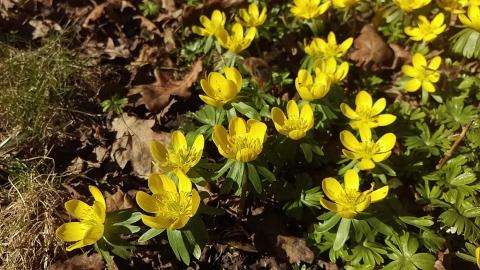
If you have been gardening for a while, at some point you have probably heard the term “naturalizing.” Naturalizing is essentially the imitation of nature by planting in irregular clumps throughout the landscape, as opposed to neat and tidy rows of blooms that would never occur on their own. The best spring bulbs for naturalizing spread readily on their own, either by bulb offsets or seed. Under ideal growing conditions, these flowers will gradually spread beyond their original planting location, lending a very natural feel to the landscape. Perfect locations for naturalizing many species of bulbs include rock gardens, woodland gardens, beneath shrubs and trees, and the front of perennial borders. Some gardeners even have luck incorporating certain bulbs into their lawns. If you are interested in naturalizing, consider some of the following hardy species.
Hardy Bulbs For Naturalizing
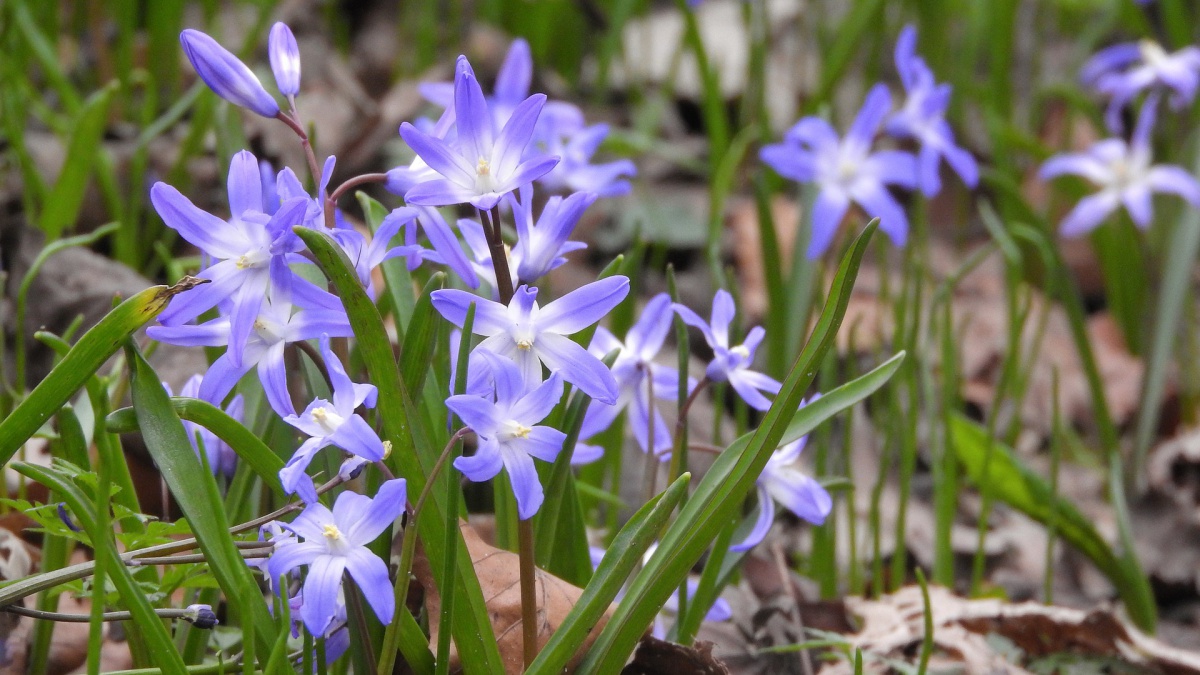
Glory-of-the-snow (Chinodoxa forbesii) is hardy to zone 3 and flowers as early as March or April. The six-petaled flowers are violet-blue with white centers, making them look somewhat star-like. When planted in organically rich, well-drained, moist soil in full sun to part shade, the plants will naturalize rapidly by bulb offsets and seeds. Glory-of-the-snow rarely exceeds six inches tall, making it a good choice for rock gardens, lawns and as a spring groundcover in perennial beds. Bulbs are largely avoided by deer and rodents and can tolerate being planted beneath or near black walnut trees.
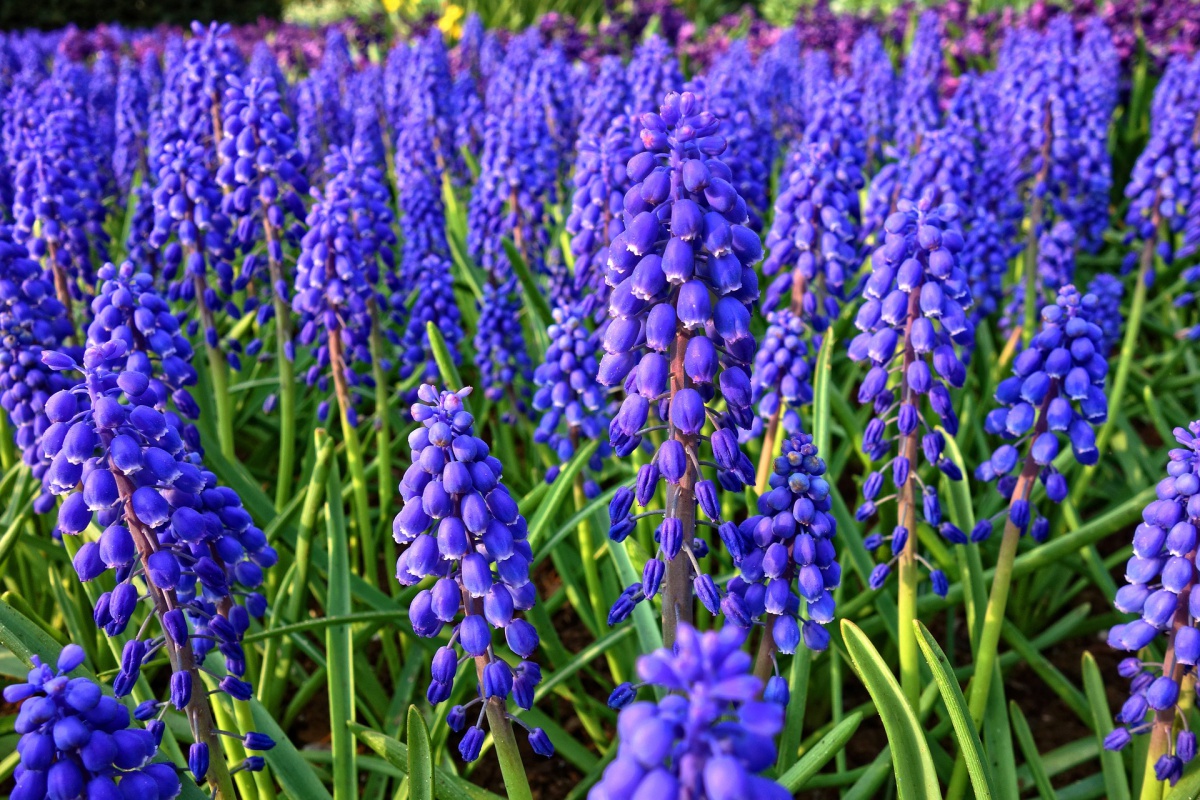
Grape hyacinth (Muscari species), or Muscari, is an April blooming bulb that is hardy to zone 4. The flower color can vary depending on species and cultivar, but the standard is a tight cluster of royal blue bell-shaped flowers with white rims around the bells. The name “grape hyacinth” comes from the flower arrangement’s supposed resemblance to a cluster of grapes. At maturity the flower stalks reach about six inches tall, with a mat of strap-like green foliage that hugs the ground. Grape hyacinth grows well in full sun and part shade, and it is tolerant of deer, rodents, clay soil and black walnut trees. When growing conditions are just right it can spread somewhat aggressively, quickly naturalizing planting beds.

Siberian squill (Scilla siberica) is an extremely cold hardy bulb (down to zone 2) that grows wild in southern Russia. It sports three to six-inch-tall leaves and flower stems and blooms in April. The flowers are blue and drooping, with one to three bells per stem. Though diminutive, Siberian squill naturalizes well in a variety of soil types in full sun to part shade areas and is commonly mixed into lawn areas beneath deciduous trees for an attractive ephemeral display. It is also unattractive to most wildlife species and can be grown beneath black walnut trees without issue.

Spring beauty (Claytonia virginica) is a perfect bulb for naturalizing if you are interested in native plants. Though not found naturally in NH, spring beauty grows in the wild in southern and western New England and across most of the central and eastern parts of North America. It can be expected to do very well in full sun to part shade locations with rich, moist, organic soil. It is hardy to zone 3 and blooms in April with white or pink five-petaled flowers with pink veins. The only downside is that spring beauty’s potato-like edible bulbs (corms) are attractive to squirrels, voles and other wildlife.
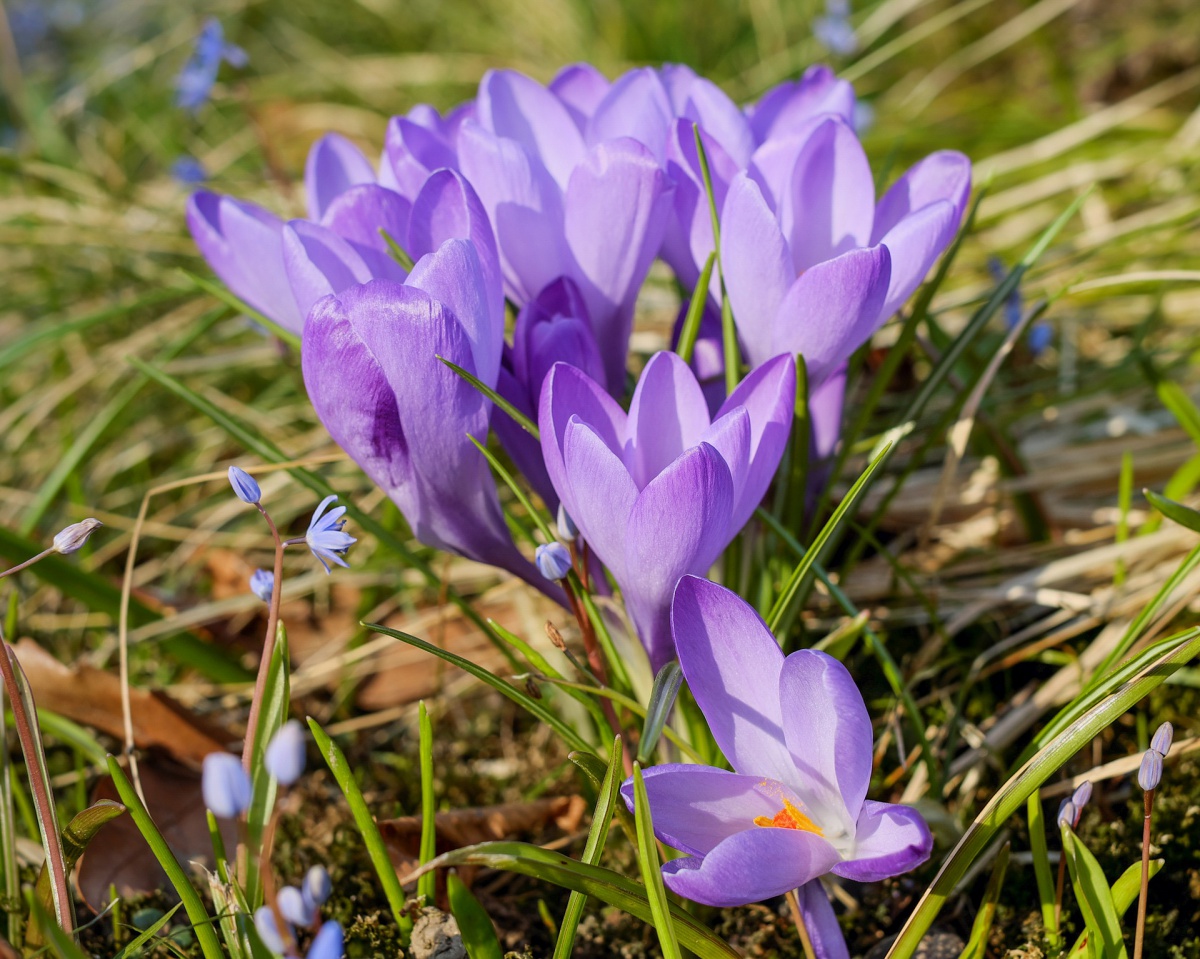
Crocus (Crocus species) are a perennial favorite when it comes to naturalizing. Most species and hybrids are hardy to zone 3 and bloom in March or early April. Crocuses are native to gravelly slopes in eastern Europe and western Asia, and, as such, tend to thrive in sandy, well-drained soils, unlike many other bulb species. Crocuses come in a variety of shades including purple, white, yellow and combinations thereof. They are rich in pollen and nectar and tend to be very popular with bees in early spring when little else is blooming. Crocuses are tolerant of deer and black walnut, but they are sometimes eaten by squirrels, mice and voles.
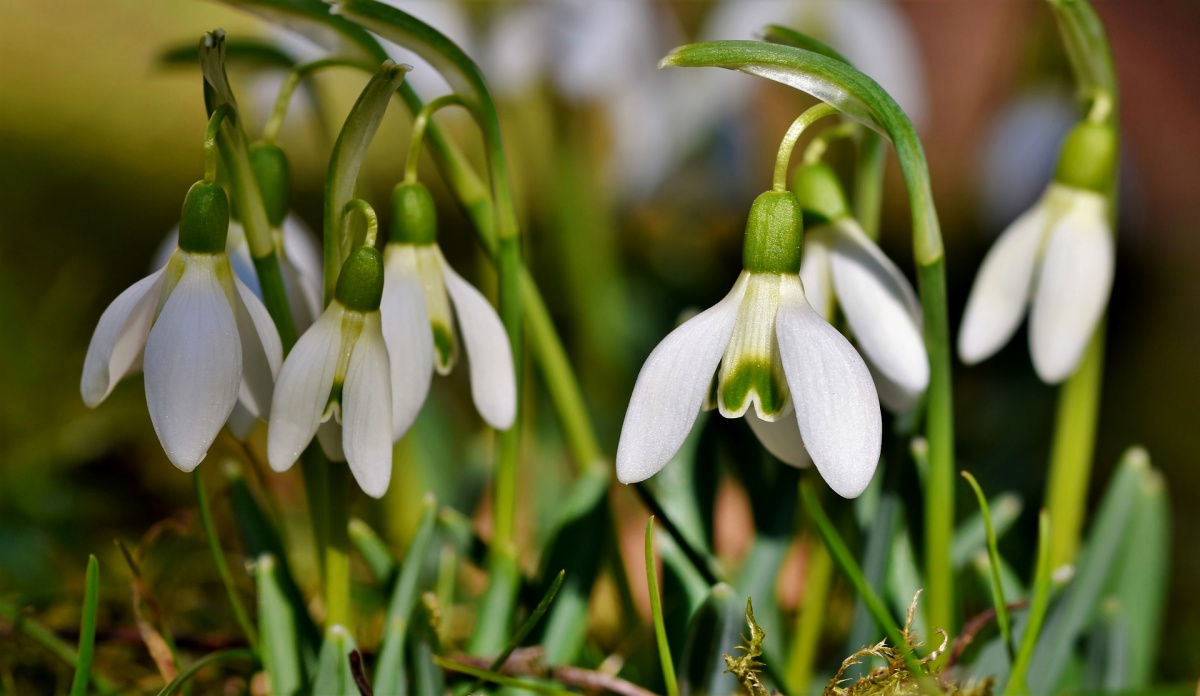
Snowdrops (Galanthus nivalis) are one of the earliest blooming bulbs, flowering as soon as February or early March when there is still snow and ice on the ground. Hardy to zone 3 and reaching a maximum of six inches tall, snowdrops are an excellent option for partly shady areas with moist, humusy (high in organic matter), well-drained soil. They typically grow very well beneath deciduous trees and shrubs and can spread by seed and bulb offsets. Snowdrop flowers are pretty much always white with subtle green accents. Markings and petal count varies slightly between varieties.
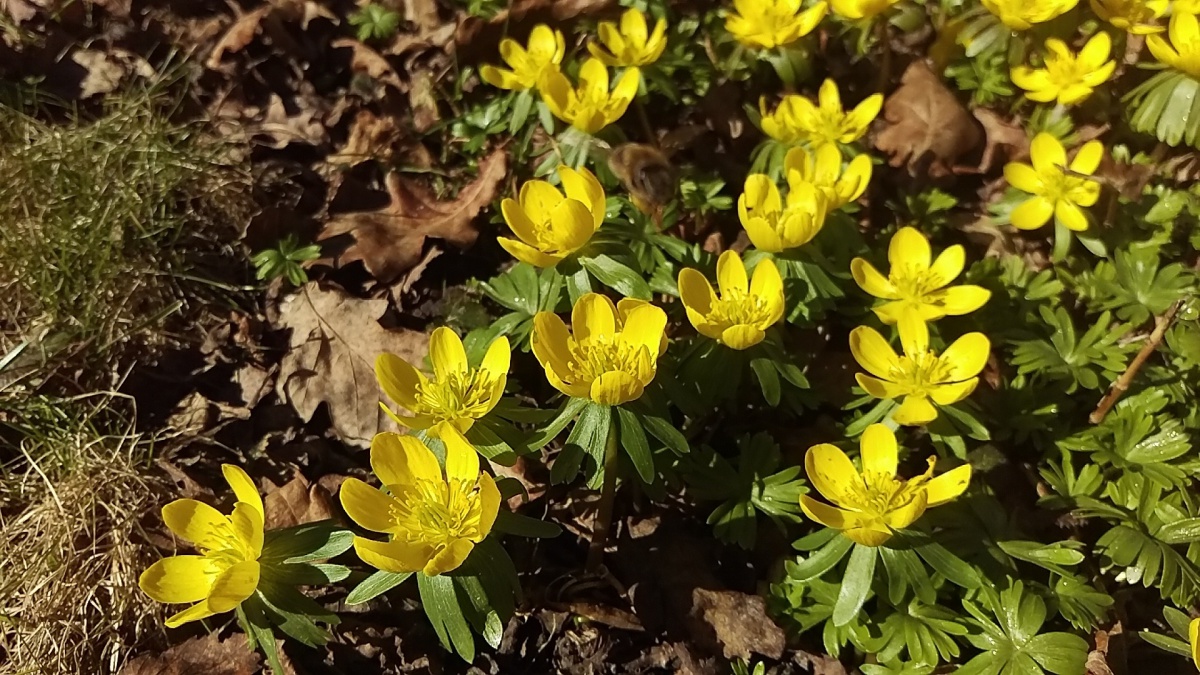
Winter aconite (Eranthis hyemalis) is an interesting spring-bloomer from southern France to Bulgaria. It features cup-shaped, upright, yellow, buttercup-like flowers in March through April. It should not be confused with lesser celandine (Ficaria verna), an invasive species in many places. It grows well in zone 3 and up in organically rich, medium moisture, well-drained soils in full sun to part shade. Under ideal growing conditions it will spread fairly quickly to form a carpet of yellow flowers in spring. Winter aconite is avoided by most wildlife and will tolerate growing beneath black walnut trees.
Choosing and Preparing the Planting Site
Having success with bulbs starts with choosing the right planting site. Start by identifying locations where the bulbs will receive full or at least part sun both before and after flowering. More exposure to sunlight usually correlates with increased growth and reliable blooms year after year. Early flowering bulbs can be planted beneath deciduous trees because they will be done blooming before the leaves are dense enough to cast shade. Additionally, small bulbs for naturalizing do not need to be planted very deeply, so they are relatively easy to tuck in amongst mature tree roots.
In general, bulbs grow well in rich, well-drained soil. They should never be planted in areas that are prone to collecting standing water, as these sites will encourage bulbs to rot. Bulbs also need warmth to grow and bloom, so avoid low-lying areas that collect frost late into the spring. The soil near the foundations of houses with a southern or western exposure usually warms up much quicker than in other locations, and bulbs planted in these spots will flower earlier.
Fertilizing
Bulbs do need a source of nutrients in order to grow optimally. Before planting, it is a good idea to get your soil tested to find out which amendments are needed. Most New Hampshire soils are already high in phosphorus, so there is no need to apply phosphorus fertilizers such as bone meal. Unless your results indicate that you need to add potassium, it is okay to skip fertilizing all together and instead incorporate compost when planting.
Planting
When naturalizing, it is helpful to plant bulbs in a more or less random pattern. One option is to gently toss them over bare soil and plant them where they fall. If you’re looking for a slightly more formal look, place bulbs in odd numbered groupings, which can look a little more natural. If growing conditions are right, the bulbs will continue to spread on their own, coming up accidentally here and there.
Planting depth and spacing depends largely on the type of bulb you are growing. The packaging that bulbs arrive in usually includes planting instructions, but in the absence of those, plant bulbs two to three times deeper than their diameter. In other words, a bulb that is one inch in diameter should be buried two to three inches deep. Bulbs should always be planted with the pointed end up and the root end facing downward. If you’re not sure which end is which, it is better to plant bulbs on their sides rather than upside down.
After-bloom care
Bulbs for naturalizing usually don’t require much care after they have finished blooming. If rainfall is scarce in the spring, it can be helpful to water thoroughly right after bloom to promote growth and encourage flower bud formation for next year. Watering once or twice should be plenty enough – overwatering could cause bulbs to rot. If soil test results indicate a nutrient deficiency, it is appropriate to fertilize lightly after flowers have faded.
Let the remaining foliage grow as long as it is green and healthy. The longer the foliage lasts, the better the bulbs will bloom the following spring (typically). Small bulb foliage will usually wither and disappear on its own, so clipping is often not necessary as it is with larger bulbs like daffodils and tulips. When bulbs are naturalized in perennial beds or lawns, the new growth of flowers or grasses will quickly hide what remains of the bulb foliage.
Got questions? The Ask UNH Extension Infoline offers practical help finding answers for your home, yard, and garden questions. Call toll free at 1-877-398-4769, Monday to Friday, 9 a.m. to 2 p.m., or e-mail us at answers@unh.edu.
Do you love learning about stuff like this?
SUBSCRIBE TO Granite State Gardening newsletter
Got questions? The UNH Extension Yard and Garden Infoline offers practical help finding answers for your yard and garden questions.
Call toll free at 1-877-398-4769, Monday to Friday, 9 a.m. to 2 p.m., or fill out webform.
